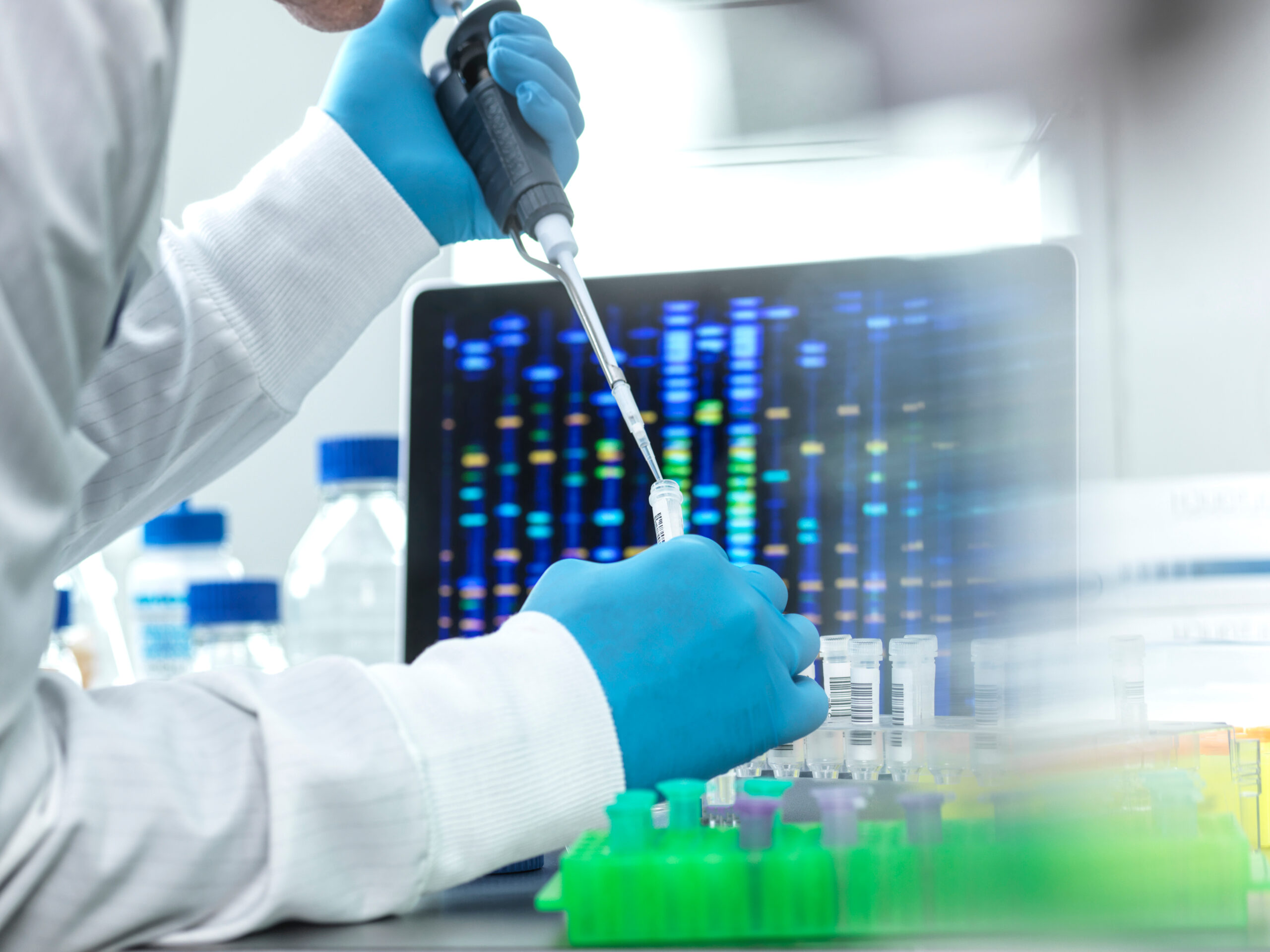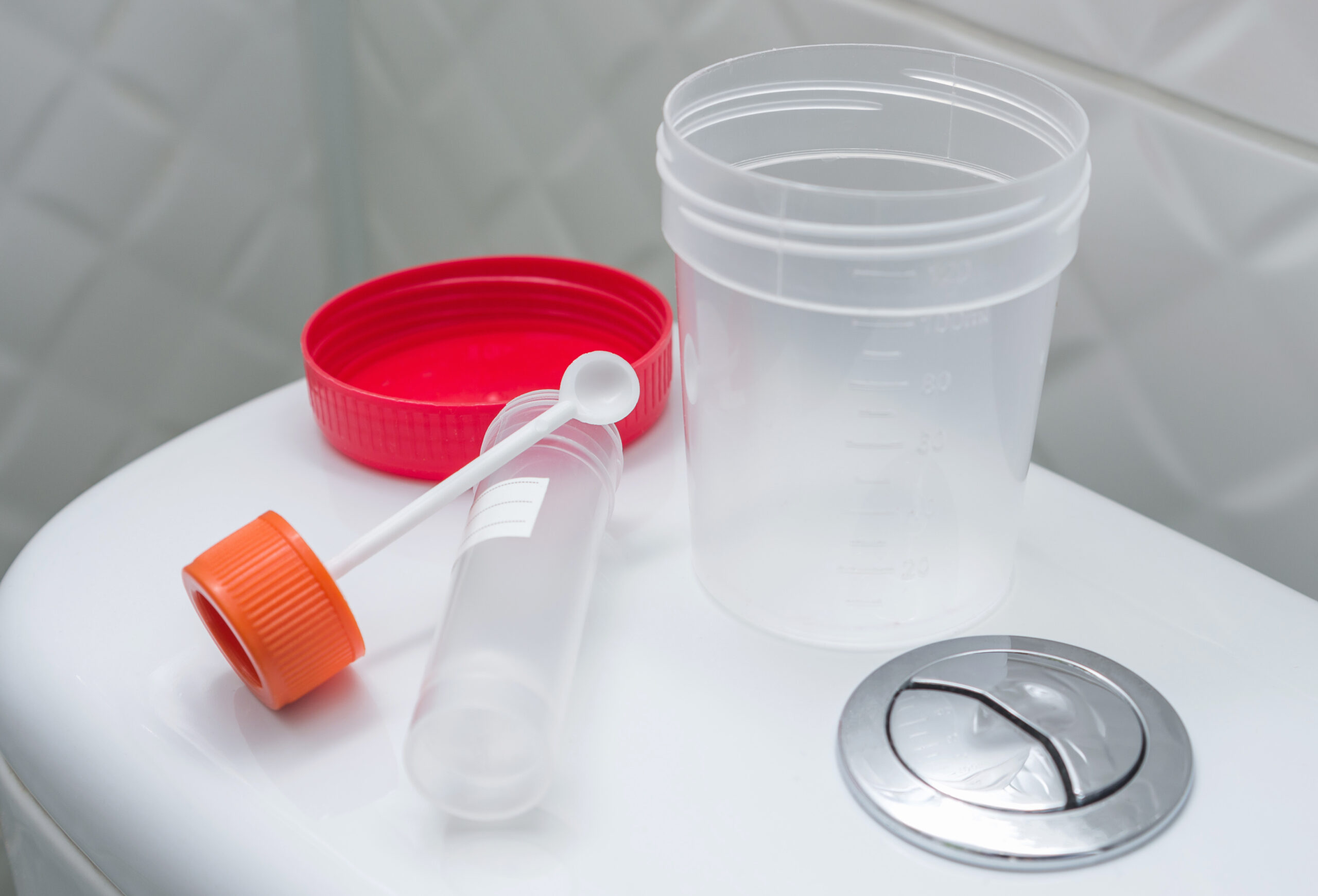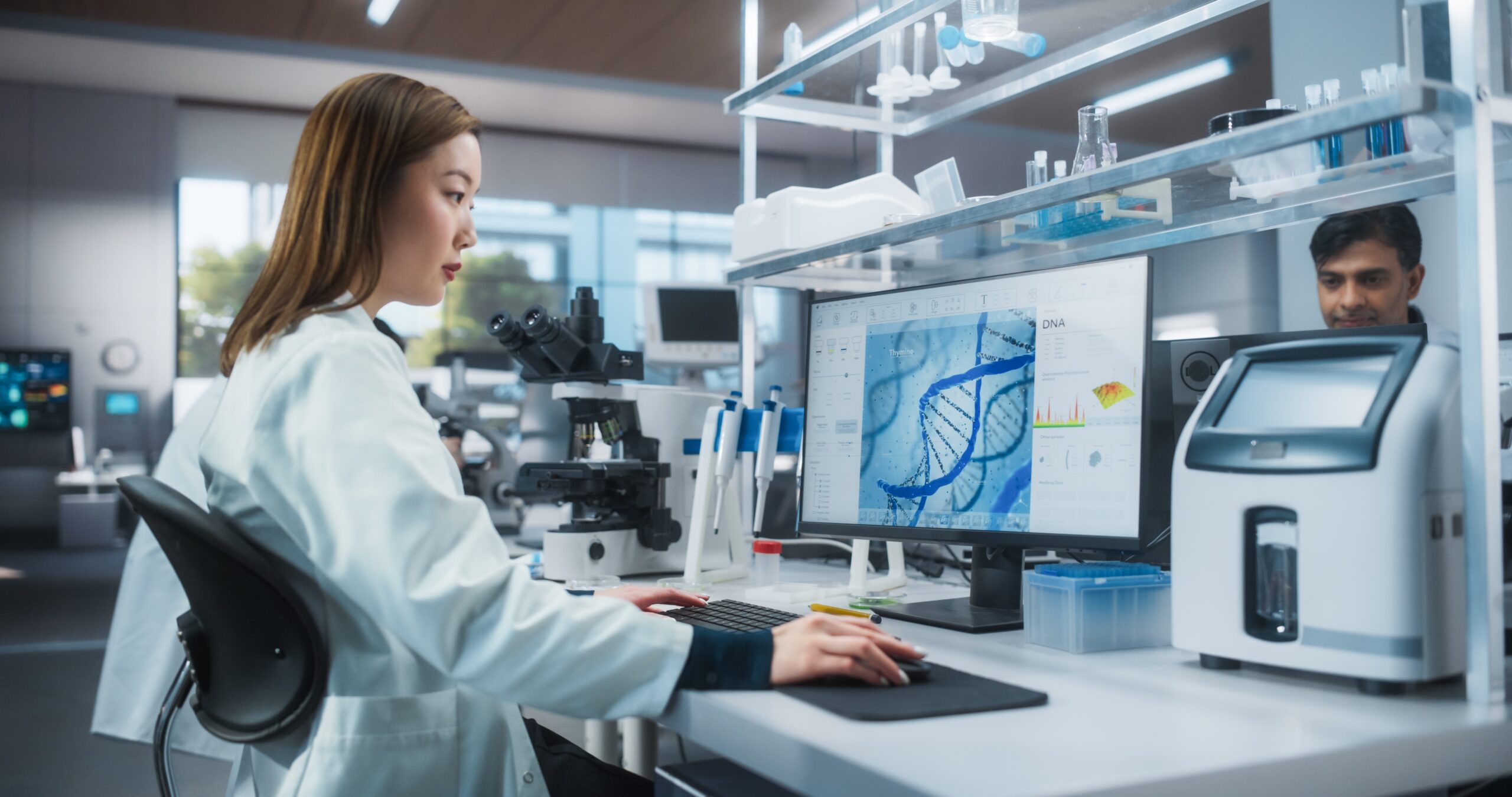
Gut Microbiome Testing: Worth the Hype?
Research into the gut microbiome has exponentially increased over the past decade. We are now uncovering how the gut microbiome plays a vital role in overall health – going far beyond merely digestion – and can influence the development of certain conditions.
This heighted interest and appreciation for the gut microbiome in relation to health and wellbeing have extended beyond the scientific community and rapidly captured the attention of the “worried well”. The concern for the health of their own gut microbiome has led to the commercialisation of at-home test kits.
Once a specialised measurement confined to clinical and research settings, gut microbiome testing is now readily available to everyday consumers. These tests offer a glimpse into the complex ecosystem residing within part of the gastrointestinal (GI) tract. But what do they actually measure, and do they live up to the hype?
What is the gut microbiome?
The gut microbiome refers to the fascinating ecosystem residing within our digestive tracts – the microbes (e.g., bacteria, yeasts, viruses, archea and fungi), along with their collective genetic material present and the by-products that they produce (e.g., short-chain fatty acids).
The term “gut health” often appears to be synonymous with a healthy “gut microbiome” nowadays. However, while “gut health” is defined as “the absence of gastrointestinal symptoms and disease”, there is no universally accepted profile for a “healthy” gut microbiome. This is due to the large inter- and intra-variability that exists, and the many combinations of the thousands of different microbial species which can reside within the gut microbiome. Instead, in research, a gut microbiome is considered optimal when it is diverse, stable and resilient.1
What are microbiome tests?
Microbiome tests examine the gut microbiome using an individual’s stool sample. They can reveal which microbes are currently present within the colon (i.e., bacteria, fungi, viruses, archaea). Individuals may provide the sample at a clinic or at home where they would then need to post the sample either on a one-off occasion or as part of a subscription.
Different analysis techniques exist, but most often the sample will be analysed by shotgun metagenomics. This method allows for the analysis of all genes in all microorganisms present in the stool sample, enabling the detection of bacterial diversity and microbial abundance.

Why is there an interest in gut microbiome tests?
Gut microbiome tests have traditionally been used within clinical settings for certain patients. For example, when there has been a severe disturbance to the balance of microbiota due to small intestinal bacterial overgrowth (SIBO), inflammatory bowel disease (IBD), or lifelong antibiotics treatment. The gut microbiota composition can be measured at baseline and then measured again following a dietary intervention to identify general improvements.
Therefore, it is important to highlight that it is not necessarily the concept itself which is considered “new” but rather the commercialisation of such tests for the general healthy population. Recently, interest and investment in gut microbiome testing have grown significantly; the gut microbiome is now well-recognised as “the conductor of health” – orchestrating organs and systems in the human body to maintain homeostasis – and, as such, providing a potential new avenue to improve health through nutrition. This, together with an ever-growing excitement for personalised nutrition, has opened the doors for a multitude of commercial at-home gut microbiome tests.
What do microbiome tests measure?
Put simply, a gut microbiome test can reveal the different types of microorganisms present in an individual’s colon (i.e., the last part of the GI tract).
There are two main analytical methods for gut microbiome tests: 16S rRNA sequencing and deep shotgun genome sequencing.
16S rRNA sequencing is an older analytical approach with limitations as it amplifies only a certain section of the genome. Therefore, it can provide a conservative indication of the microbes present at the genus level (and possibly the species level) but does not provide strain details. This test is also not able to detect all microbes, particularly those in small quantities. By failing to capture the entirety of microbes present, crucial microbial details could be lacking.2
Deep shotgun sequencing is an advanced technique which identifies all microbes present (even those in small quantities), providing strain level detail and whole genome data. Only one individual sample is run each time during deep sequencing which is reflected in the much higher price point. Shotgun sequencing can provide enormous amounts of impressive data regarding the entire genome sequence, and a bacterial strain’s metabolic potential (e.g., production of vitamin B or K in the gut). However, there is still a lack of knowledge regarding the interpretation of such data and its relevance to healthy individuals and/or disease risk.

Is it worth the hype?
- Gut microbiome tests can detect the names of microbes present (i.e., genus level) such as bifidobacteria, lactobacilli, Streptococcus and Enterococcus but, depending on the analytical technique, cannot always identify strains or explain functionality of the microbes. Essentially, such tests can inform “who is there” but not “what they do”.
- How microbes collectively act within the microbiome can depend on the entire environment and other microbes present. Defining “good” bacteria is complicated as it is the total ecosystem composition which will determine whether a specific bacterium is favourable or unfavourable to the host. Due to the intense complexity of the gut microbiome, and its being unique to each person, it is unclear at the moment what interventions would be best on the basis of the test results as the ecosystem is extremely complicated, with many unknowns3e., what would be “healthier” than the gut composition an individual currently has?
- Unlike other tests, reference values do not exist. Therefore, clinicians are unable to offer any specific guidance when presented with gut microbiome test results which do not currently provide value to clinical decisions.4
- Gut microbiome tests are generally a single measure from a single timepoint. Repeat testing would allow comparisons and may initiate conclusions as to the long-term impact but can be impractical due to high financial costs.
- By measuring a stool sample, this only captures microbes present in the last part of the GI tract (i.e., the colon). However, the gut microbiome exists throughout the entire GI system, and these tests do not detect any microbial profile further up the ~9m long GI tract.
What does the future hold for gut microbiome testing?
Everyone is unique and therefore a personalised approach to health and nutrition based on individual genetic-, environmental-, and lifestyle factors rather than generic approaches holds great potential.5 However, further research and advancement in analytical techniques are required before personalisation can deliver the desired results. In the future, and as technological advances continue to be made in this field, commercialisation of gut microbiome testing could provide insights into overall health, potential gut imbalances and predisposition to various conditions, thus equipping healthcare providers with a powerful tool to offer personalised advice and interventions.

Spend smart: 3 key considerations for gut microbiome testing
- Ensure access to specialist support from a trained healthcare professional such as a Registered Nutritionist or Dietitian to help interpret the results.
- Have realistic expectations about the information the test can provide e.g., it is unable to diagnose conditions, will not always capture the whole microbial community depending on analytical method and does not provide functionality of the gut microbiome which is more important than arbitrary compositional data.
- Be aware of the total cost from single or subscription testing. Could money spent on an expensive gut microbiome test be used elsewhere to help improve long-term dietary intakes or physical activity levels, which are known to support the gut microbiome?
How can we support our gut microbiome?
Generally, motivation to pay for commercial gut microbiome testing is fuelled by the goal of optimising gut health. Eager to enhance physical and mental wellbeing, people can often overlook or neglect basic fundamentals in favour of these costly tests. At Yakult Science for Health, we have developed the five pillars of gut health to emphasise the core habits, confirmed continuously in the latest scientific research, which can optimise gut health:
- Diet: The gut microbiota adapts according to the foods we eat.6 Consuming a high fibre diet with a variety of plants ‘feeds’ the bacteria in our gut which can increase the number and types of beneficial bacteria (e.g., lactobacilli and bifidobacteria) residing there. Research shows those who eat >30 different types of plants per week have a more diverse gut microbiome compared to those who eat <10 plants.7
- Exercise: Regular exercise independently increases the diversity of the gut microbiota and increases the growth of beneficial bacteria in the gut, both of which can reduce inflammation and support immune function.8 Exercise also improves mucosal barrier function and stimulates production of SCFAs (e.g., butyrate, propionate) which can protect against gastrointestinal disorders.9
- Sleep: Irregular sleep patterns are associated with poorer diet quality, inflammation, and reduced gut microbiota diversity.10
- Hydration: Hydration is important for digestion and overall gut health.11
- Mindfulness: There is a close link between the brain and the gut. Mindfulness has been associated with improved physical, mental, and gut health. It can alter the gut microbiota composition in such a way that could help to reduce symptoms of anxiety and depression.12

Take home message
Undoubtedly, the concept of gut microbiome testing is incredibly exciting and holds significant promise. As research continues in this area, and when combined with diets targeting the gut microbiota to introduce or eliminate specific bacterial species, such testing could prove a powerful avenue for realising the possibilities of improving health through nutrition – revolutionising patient care and making gut health a cornerstone of modern medicine.
However, public interest is moving faster than science. Commercial gut microbiome tests are in their infancy and currently the evidence shows neither proof for its real-life application nor benefits to the general public in clinical practice. The results can be of interest to those curious to know which microbes are present at the lower end of the GI tract but, at this stage, functionality is unknown, and results cannot be linked to disease risk.
Despite the surge in these expensive tests promising health empowerment, the real gut health game-changers – emphasised even in the latest and most ground-breaking research – lie in the basics: a diverse diet, regular exercise, good quality sleep, adequate hydration, and minimising stress through mindfulness techniques.
For healthcare professionals, it is crucial to guide patients back to these core fundamental habits – whilst keeping an eye on future breakthroughs. Gut tests can offer intriguing, albeit limited insights; however, it is the everyday lifestyle choices your patients make that hold the power to transform their health from the inside out.
References
- Lozupone CA, Stombaugh JI, Gordon JI, Jansson JK, Knight R. Diversity, stability and resilience of the human gut microbiota. Nature. 2012;489(7415):220-230. doi:10.1038/nature11550.
- Thomas AM, Segata N. Multiple levels of the unknown in microbiome research. BMC Biol. 2019;17(1):48. doi:10.1186/s12915-019-0667-z.
- Hill C. You have the microbiome you deserve. Gut Microbiome. 2020;1:e3. doi:10.1017/gmb.2020.3.
- Staley C, Kaiser T, Khoruts A. Clinician guide to microbiome testing. Dig Dis Sci. 2018;63(12):3167-3177. doi:10.1007/s10620-018-5299-6.
- Ordovas JM, Ferguson LR, Tai ES, Mathers JC. Personalised nutrition and health. BMJ. 2018;361:bmj.k2173. doi:10.1136/bmj.k2173.
- De Angelis M, Garruti G, Minervini F, Bonfrate L, Portincasa P, Gobbetti M. The food-gut human axis: the effects of diet on gut microbiota and metabolome. Curr Med Chem. 2019;26(19):3567-3583. doi:10.2174/0929867324666170428103848.
- McDonald D, Hyde E, Debelius JW, et al. American Gut: an Open Platform for Citizen Science Microbiome Research. mSystems. 2018;3(3):e00031-18. Published 2018 May 15. doi:10.1128/mSystems.00031-18.
- Monda V, Villano I, Messina A, et al. Exercise modifies the gut microbiota with positive health effects. Oxid Med Cell Longev. 2017;2017:3831972. doi:10.1155/2017/3831972.
- Wegierska AE, Charitos IA, Topi S, Potenza MA, Montagnani M, Santacroce L. The connection between physical exercise and gut microbiota: implications for competitive sports athletes. Sports Med. 2022;52(10):2355-2369. doi:10.1007/s40279-022-01696-x.
- Bermingham KM, Stensrud S, Asnicar F, et al. Exploring the relationship between social jetlag with gut microbial composition, diet and cardiometabolic health, in the ZOE PREDICT 1 cohort. Eur J Nutr. 2023;62(8):3135-3147. doi:10.1007/s00394-023-03204-x.
- Popkin BM, D’Anci KE, Rosenberg IH. Water, hydration, and health. Nutr Rev. 2010;68(8):439-458. doi:10.1111/j.1753-4887.2010.00304.x.
- Zhang D, Lee EKP, Mak ECW, Ho CY, Wong SYS. Mindfulness-based interventions: an overall review. Br Med Bull. 2021;138(1):41-57. doi:10.1093/bmb/ldab005.
